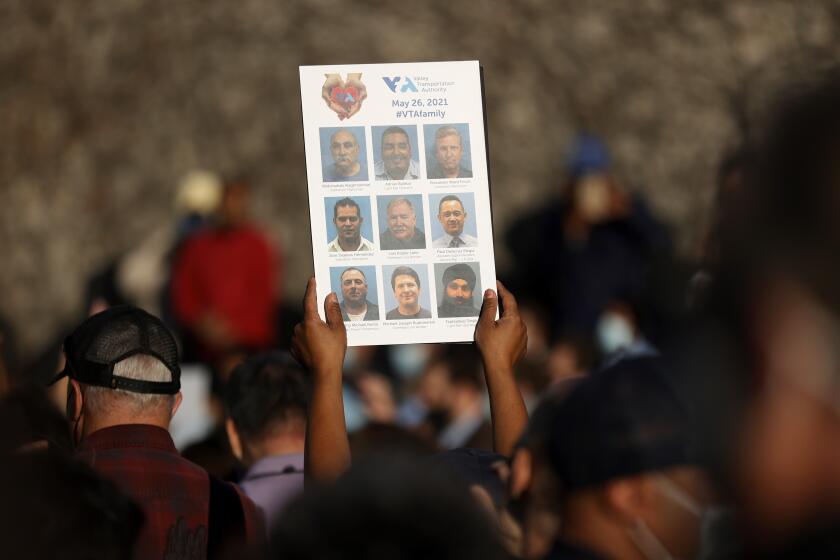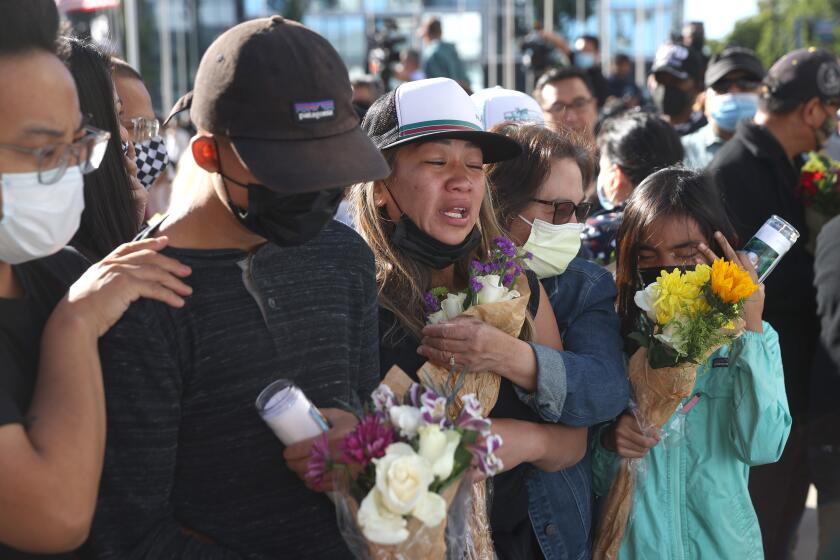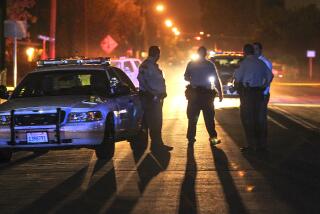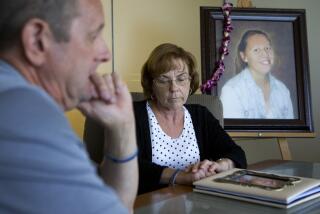Column: California already has strong gun laws. But to save lives we have to use them
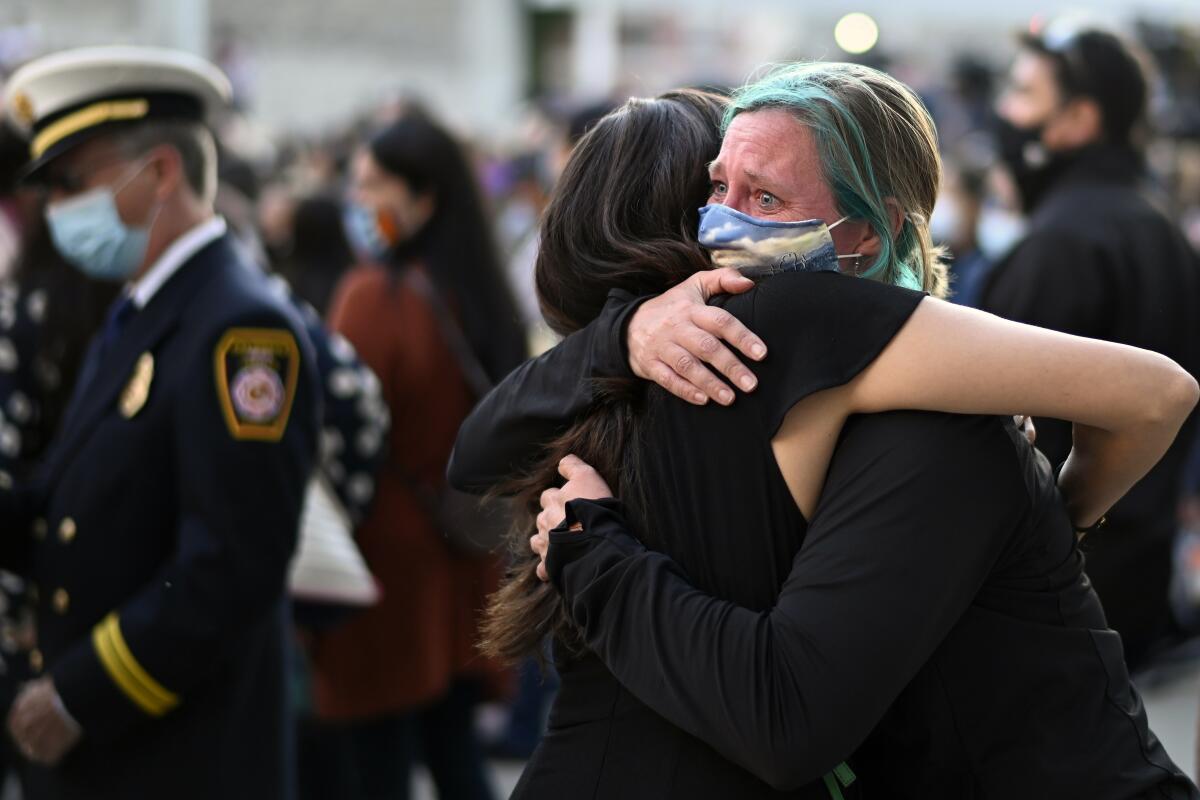
- Share via
SACRAMENTO — If we really want to reduce mass shootings — all gun violence — we’ve got to become snitches on our co-workers, family members and maybe exes.
When they’re acting scary — threatening people, talking about wanting to kill, beating up someone — we’ve got to rat them out to law enforcement.
Cops can investigate and find out whether they’re gun owners. A judge can order that their weapons be temporarily seized pending a court hearing. If they’re deemed a danger to themselves or others, their guns then can be confiscated for up to a year or more.
And lives may be saved.
That’s possible under California’s “red flag” law. Repetitive domestic violence, for example, can be a red flag.
But the law is failing to live up to its promise in much of the state. Why?
One, even if people know about the law, they’re naturally reluctant to become snitches and “get involved,” often because they’re afraid of riling a crazed brute.
Two, not all law enforcement agencies want to be bothered. Maybe they don’t agree with taking away a man’s guns. Or it’s too much trouble — they’re already overburdened with daily law enforcement crises.
But the San Jose mass shooter would have been a prime candidate for the red flag law.
After 57-year-old Samuel Cassidy killed nine male co-workers at a San Jose rail yard on May 26, then turned a gun on himself, the ugly stories started coming out.
Surviving co-workers at the Santa Clara Valley Transportation Authority described the shooter as a loner. One said he had “gone off” on managers about three weeks before the killings.
The maintenance man’s former wife told the Mercury News that he had a bad temper and often complained that co-workers and family members had easier lives than he did.
“We can say that the suspect has been a highly disgruntled VTA employee for many years,” said Santa Clara County Sheriff’s Office spokesman Russell Davis, adding that this “may have contributed to why he targeted VTA employees.”
You think?
A former girlfriend alleged in a court declaration in 2009 that Cassidy sexually assaulted her and “exhibited major mood swings as a result of bipolar disorder.”
Santa Clara County Dist. Atty. Jeff Rosen, who has been delving into Cassidy’s background, told me he couldn’t confirm that the shooter had been diagnosed with bipolar disorder.
According to a Department of Homeland Security memo, Cassidy professed “a hatred of his workplace” when detained by U.S. Customs and Border Protection while returning from the Philippines in 2016, the Wall Street Journal reported.
Homeland Security agents “did not share that information with local law enforcement,” Rosen says. “I’ll be talking to Homeland Security and finding out why.”
Body-camera video from a Santa Clara County Sheriff’s deputy shows the first law enforcement team that entered the San Jose light rail yard to try to locate the gunman that killed nine people last Wednesday.
Cassidy’s arsenal at the rail yard included three semiautomatic 9-millimeter handguns, 32 high-capacity magazines and nearly 400 rounds of ammunition.
Each magazine held 12 rounds, two more than the legal limit in California.
But there’s a caveat: It’s illegal to sell a magazine that size in California, but not to possess one. Californians voted to outlaw possession of high-capacity magazines in 2016, but the law’s on hold. The gun lobby sued and won before a U.S. district judge, and the case will be heard by a federal appeals court.
The shooter set his house afire before leaving on the morning killing rampage. Sifting through the charred ruins, police uncovered multiple cans of gasoline, suspected Molotov cocktails, 12 guns and roughly 25,000 rounds of ammunition.
What if someone — a co-worker, family member or an ex — had called the police with any suspicions?
An investigation into the San Jose attack indicates a targeted attack and a long-angry gunman, as the families and friends of the nine victims grieve.
“He would have been investigated by police, they’d have spoken to the shooter, and we may have gotten a gun violence restraining order,” Rosen says. “His guns would have been confiscated. He may have been referred to a mental health facility.
“I know we absolutely have stopped countless mass shootings by using this tool,” Rosen says of the red flag law. “It has saved countless lives.”
Lots of suicides have been prevented too, he says.
But that’s only when the tool is used. And it isn’t used everywhere. Santa Clara County uses it a lot. San Diego excels at it. Los Angeles, disappointing.
“Some law enforcement agencies are reluctant to take this on because it interferes with their philosophy. They think it’s inappropriate to take a person’s guns away,” says Dr. Garen Wintemute, director of the UC Davis Violence Prevention Research Program. “This tends to be in rural counties.
San Jose gunman Samuel Cassidy “coordinated the destruction of his residence” with the mass shooting, sheriff’s officials say.
“And someone has to go get the guns. It’s not a one-person job. It takes five or six officers. You hand this guy an order and tell him, ‘We’re going to take your guns.’”
There’s also the reluctance of citizens to stick their necks out. They probably haven’t even heard about the law.
“I’d like to see a pretty massive public service campaign” to inform the public and persuade them to use the law, says state Sen. Dave Cortese (D-San Jose). “How do you get people to speak up? They don’t want to betray privacies.
“That’s coming. We need to leave the thought in people’s heads that the next time they hear about a person threatening to kill other people with guns, it’s time to call the police.”
And it’s time for Gov. Gavin Newsom and the Legislature to put serious money behind raising red flags on potential killers.
More to Read
Sign up for Essential California
The most important California stories and recommendations in your inbox every morning.
You may occasionally receive promotional content from the Los Angeles Times.
